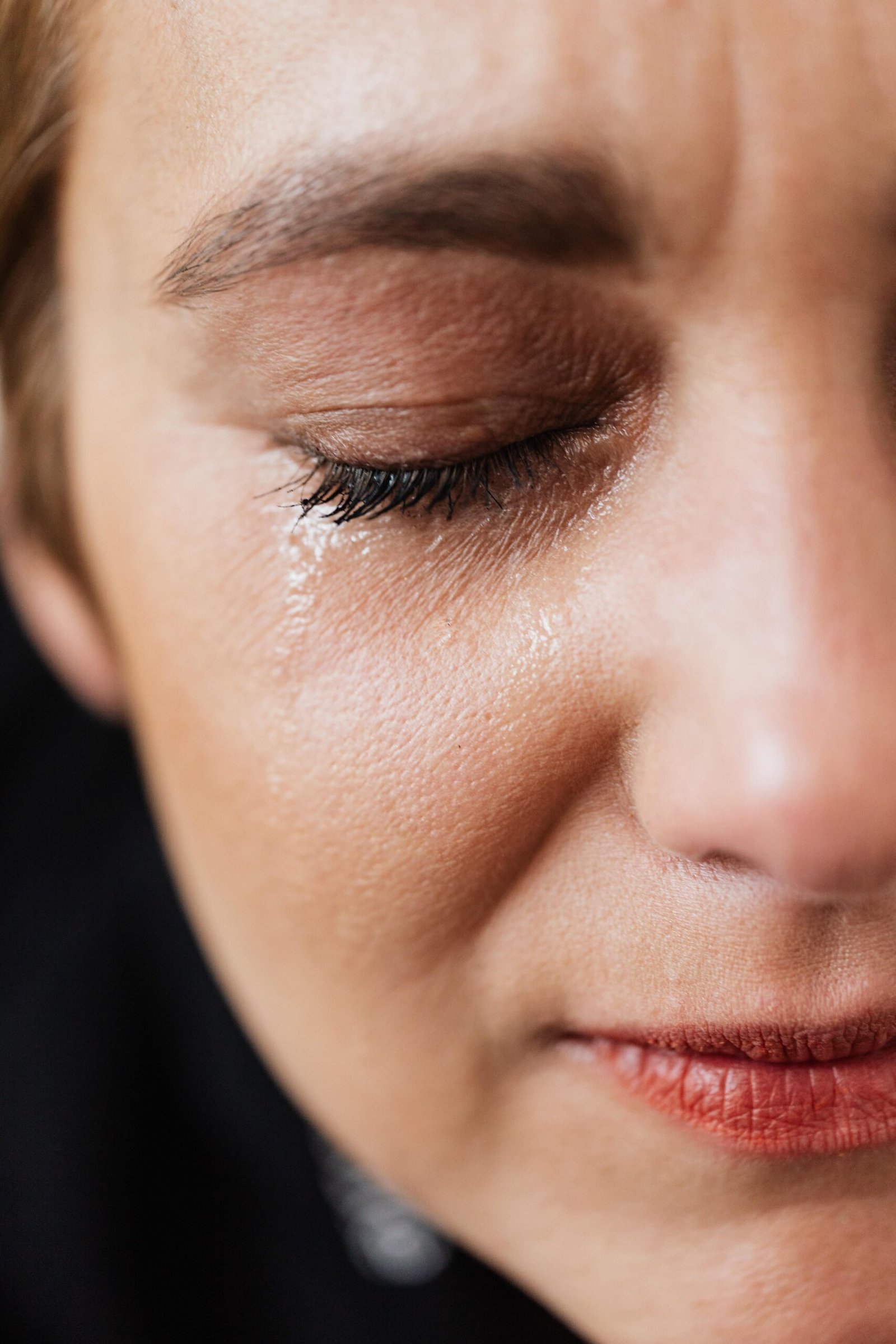
Whether you experience mild discomfort or debilitating cramps, finding the best position for period pain can make a world of difference. From curled up in a ball to practicing yoga poses, this comprehensive guide will explore various positions that can help alleviate the discomfort associated with menstrual cramps. With practical tips and expert advice, you’ll discover new ways to ease your monthly discomfort and find the position that works best for you. Say goodbye to unnecessary suffering and hello to a more comfortable period.

Understanding Period Pain
What is period pain?
Period pain, also known as menstrual cramps or dysmenorrhea, refers to the discomfort and pain experienced by individuals during their menstrual cycle. It is a common occurrence among women and can vary in intensity from person to person. Period pain typically occurs in the lower abdomen and may be accompanied by other symptoms such as bloating, fatigue, and mood changes.
Causes of period pain
Period pain is primarily caused by the contractions of the uterus as it sheds its lining during menstruation. These contractions can restrict blood flow to the uterus and cause pain. Hormonal imbalances, such as an excess of prostaglandins (hormone-like substances responsible for regulating contractions), can also contribute to the severity of period pain. Certain medical conditions, such as endometriosis or uterine fibroids, can further exacerbate menstrual cramps.
Types of period pain
There are two main types of period pain: primary and secondary dysmenorrhea. Primary dysmenorrhea refers to the regular menstrual cramps experienced by individuals without any underlying medical condition. It typically begins in adolescence and tends to diminish with age or after childbirth. On the other hand, secondary dysmenorrhea is characterized by severe and debilitating menstrual pain caused by an underlying medical condition, such as endometriosis, pelvic inflammatory disease, or fibroids.
Factors to Consider
Severity of pain
The severity of period pain varies from person to person. While some may experience mild discomfort, others may endure debilitating pain that significantly impacts their daily activities. The level of pain experienced is an important factor to consider when finding the best position for relief. It is essential to pay attention to your body and adjust your position accordingly, aiming to find a balance between comfort and pain reduction.
Personal preferences
Individuals have different preferences when it comes to finding pain relief. Some may find comfort in specific positions, while others may prefer alternative methods such as heat therapy or gentle exercises. It is crucial to consider your personal preferences and what brings you the most relief. Remember that each person is unique, and what works for one may not necessarily work for another.
Mobility level
Understanding your own mobility level is essential when determining the best position for period pain relief. If you have limited mobility or physical restrictions, certain positions may not be suitable or comfortable for you. It is important to choose positions that you can easily transition into and sustain without causing discomfort or strain on your body.

Positions to Relieve Period Pain
Lying on your back
One of the simplest positions to try for period pain relief is lying on your back. Use a soft or firm pillow to support your head and keep your knees slightly bent. This position helps to alleviate pressure on the lower abdomen and back, reducing cramping and discomfort.
Lying on your side
Another position that can provide relief is lying on your side. Place a pillow between your knees to keep your hips aligned and release tension in the lower back. This position can help to alleviate discomfort by relieving pressure on the abdominal muscles and promoting relaxation.
Lying in the fetal position
The fetal position is a popular choice for many individuals suffering from period pain. Simply lie on your side and draw your knees towards your chest, while keeping your back straight. This position helps to relax the muscles in the lower abdomen and can provide relief from cramps.
Sitting with legs raised
Sitting with your legs raised can also help alleviate period pain. Find a comfortable chair or sofa and prop your legs up on a footrest, ottoman, or stack of pillows. This position promotes blood circulation and reduces pressure on the pelvic area, offering relief from menstrual cramps.
Using a heating pad
Applying heat to the lower abdomen can be incredibly soothing for period pain. Use a heating pad on a low or medium setting and place it on your lower abdomen for 15-20 minutes. The warmth helps to relax the muscles and alleviate cramping.
Using a hot water bottle
Similar to a heating pad, a hot water bottle can provide effective relief for period pain. Fill a water bottle with warm (not boiling) water and wrap it in a towel before placing it on your lower abdomen. The gentle heat can help to ease muscle tension and reduce pain.
Yoga Poses for Period Pain Relief
Child’s Pose
Child’s Pose, or Balasana, is a restorative yoga pose that can help relieve period pain. Kneel on the floor, sitting back on your heels, and lower your forehead to the ground. Extend your arms in front of you or alongside your legs for support. This pose gently stretches the lower back and helps to relieve tension in the abdominal region.
Supine Twist
The Supine Twist, or Supta Matsyendrasana, is a yoga pose that helps relieve menstrual cramps and lower back pain. Lie on your back with your arms extended to the sides. Bend your knees and drop them to one side, while keeping your shoulders grounded. This pose provides a gentle twist to the spine, releasing tension and promoting relaxation.
Bridge Pose
Bridge Pose, or Setu Bandhasana, is a pose that stretches and strengthens the abdominal muscles, relieving menstrual pain. Lie on your back with your knees bent and feet flat on the floor. Lift your hips off the ground, pressing through your feet and engaging your glutes. Hold this position for a few breaths before gently lowering your hips back down.
Seated Forward Bend
Seated Forward Bend, or Paschimottanasana, is a calming pose that stretches the entire back of the body. Sit on the floor with your legs extended in front of you. Hinge forward from the hips, reaching towards your toes or shins. Relax your neck and shoulders while maintaining a straight spine. This pose helps to alleviate tension and relieve menstrual discomfort.

Exercises to Alleviate Period Pain
Pelvic tilts
Pelvic tilts are exercises that involve tilting the pelvis forward and backward to strengthen the abdominal muscles and promote blood flow to the pelvic region. Lie on your back with your knees bent and feet flat on the floor. Tilt your pelvis forward, arching your lower back, and then tilt it backward, flattening your lower back against the floor. Repeat this movement several times to alleviate period pain.
Cat-Cow
Cat-Cow is a gentle yoga flow that involves arching and rounding the back to relieve tension and promote flexibility. Start on your hands and knees, with your wrists under your shoulders and knees under your hips. Inhale, drop your belly and lift your chest towards the ceiling (Cow Pose), and then exhale, round your spine and tuck your chin towards your chest (Cat Pose). Alternate between these two positions, moving with your breath, to ease period pain.
Hip circles
Hip circles are a simple yet effective exercise to relieve period pain and increase mobility in the pelvic area. Stand with your feet hip-width apart and place your hands on your hips. Slowly circle your hips in one direction, making large circles. After a few repetitions, switch directions and continue for a few more rounds. This exercise helps to improve blood flow to the pelvic area and reduce cramping.
Alternative Positions to Try
Knee-to-Chest
The knee-to-chest position is a gentle stretch that helps to relieve tension in the lower back and abdominal region. Lie on your back with your legs extended. Bend one knee and bring it towards your chest, using your hands to gently pull it closer. Hold this position for a few breaths before switching to the other leg. This stretch can provide relief from period pain and promote relaxation.
Seated Straddle Stretch
The seated straddle stretch, also known as the wide-angle seated forward bend, is a position that stretches the inner thighs and lower back. Sit on the floor with your legs extended out to the sides as wide as is comfortable for you. Hinge forward from the hips, reaching towards your feet or shins. Keep your spine straight and relax into the stretch. This position helps to alleviate tension and reduce discomfort during menstruation.
Butterfly Stretch
The butterfly stretch, or bound angle pose, is a seated position that helps to open the hips and relieve menstrual cramps. Sit on the floor with the soles of your feet together, allowing your knees to fall out to the sides. Gently press your knees towards the floor while keeping your back straight. Breathe deeply and hold this position for a few minutes to ease period pain.
Downward Dog
Downward Dog, or Adho Mukha Svanasana, is a yoga pose that stretches and strengthens the entire body, including the arms, shoulders, back, and legs. Start on your hands and knees, with your wrists under your shoulders and knees under your hips. Lift your knees off the ground and straighten your legs, pressing your heels towards the floor. Keep your spine long and engage your core. This pose helps to relieve tension and increase blood flow to the pelvic area.
Standing Forward Bend
Standing Forward Bend, or Uttanasana, is a gentle inversion pose that helps to relieve tension in the back and stretch the hamstrings. Stand with your feet hip-width apart and fold forward from the hips, allowing your upper body to hang loose. Keep your knees slightly bent if needed and let your head, neck, and shoulders relax. This pose can reduce discomfort and promote relaxation during menstruation.
Thread the Needle Pose
Thread the Needle pose, or Parsva Balasana, is a gentle twist that releases tension in the back and shoulders. Begin on your hands and knees, with your wrists under your shoulders and knees under your hips. Reach your right arm underneath your left arm and through the gap between your left arm and left knee. Lower your right shoulder and cheek to the ground, feeling a gentle twist through your spine. Repeat on the other side. This position helps to alleviate period pain and promotes a sense of calm.
Tips for Finding the Best Position
Experiment and listen to your body
Finding the best position for period pain relief often requires some experimentation. Every person is different, so it is important to listen to your body and try out different positions to determine what works best for you. Pay attention to how each position affects your pain levels and overall comfort.
Use pillows or cushions for support
To enhance your comfort and support in various positions, consider using pillows or cushions. Place them under your back, hips, or knees to provide additional support and alleviate pressure on specific areas of your body. Experiment with different pillow placements to find the most comfortable setup for your individual needs.
Try different positions throughout the day
Period pain can fluctuate in intensity throughout the day. It is beneficial to try different positions at different times to alleviate discomfort. For example, you may find that lying on your back is most soothing in the morning while opting for a seated position with legs raised in the afternoon. By adapting to your changing needs, you can find optimal relief throughout the day.
Combine positions and techniques
Finding the best position for period pain relief may involve combining different positions or techniques. For example, you might try using a heating pad while lying on your side or incorporate gentle stretching exercises into your preferred position for added relief. Don’t be afraid to mix and match to find the perfect combination that works for you.
Maintain good posture
While seeking pain relief, it is important to maintain good posture, particularly when sitting or standing. Good posture helps to distribute weight evenly and reduce strain on your muscles and joints. Sit or stand with your shoulders back, head aligned with your spine, and avoid slouching. By maintaining proper posture, you can prevent additional discomfort and promote overall spinal health.
Additional Tips for Pain Relief
Take over-the-counter pain medication
Over-the-counter pain medications, such as nonsteroidal anti-inflammatory drugs (NSAIDs), can be effective in relieving period pain. Ibuprofen, naproxen sodium, and aspirin are common options that can help reduce inflammation and alleviate cramps. Always follow the recommended dosage instructions and consult with a healthcare professional if you have any concerns or underlying medical conditions.
Apply a topical pain reliever
Topical pain relievers, in the form of creams, gels, or patches, can provide localized relief from period pain. These products often contain ingredients such as menthol or capsaicin, which help to numb the area and reduce discomfort. Follow the instructions provided and apply the topical pain reliever to the affected area as directed.
Practice deep breathing and relaxation techniques
Deep breathing exercises and relaxation techniques can help reduce stress and tension, promoting a sense of calm and easing period pain. Take slow, deep breaths, focusing on fully inhaling and exhaling. You can also try meditation, guided imagery, or progressive muscle relaxation to help relax your body and alleviate discomfort.
When to Seek Medical Advice
Excessive pain or heavy bleeding
While it is normal to experience some discomfort during menstruation, excessive pain or heavy bleeding may indicate an underlying issue. If your period pain is significantly impacting your quality of life or if you are experiencing unusually heavy bleeding, it is important to seek medical advice. A healthcare professional can assess your symptoms and provide appropriate guidance or treatment options.
Symptoms that interfere with daily activities
If your period pain is severe enough to interfere with your ability to carry out your daily activities, it is advisable to consult with a healthcare professional. They can evaluate your symptoms, identify any underlying causes, and recommend suitable strategies to manage your pain and improve your quality of life.
Pain that worsens over time
If your period pain worsens over time or becomes increasingly severe, it may be indicative of an underlying gynecological condition or hormonal imbalance. Seeking medical advice is important in order to receive proper diagnosis and treatment. These conditions may require specialized care or interventions to effectively manage the pain and address any underlying causes.
Conclusion
Finding the best position for period pain relief is a personal journey that requires experimentation and attention to your individual needs. From lying on your back or side to practicing yoga poses and exercises specifically targeting the pelvic region, there are numerous positions and techniques that can help alleviate menstrual cramps. Remember to consider factors such as the severity of your pain, personal preferences, and your mobility level when determining the most suitable positions for you. Additionally, implementing additional tips like using pillows for support, trying different positions throughout the day, or seeking pain relief through medication or topical remedies can further enhance your overall comfort. If you experience excessive pain, heavy bleeding, or worsening symptoms, it is essential to consult with a healthcare professional for further evaluation and guidance. By actively exploring and incorporating various positions and techniques, you can find relief from period pain and better manage this common experience.





